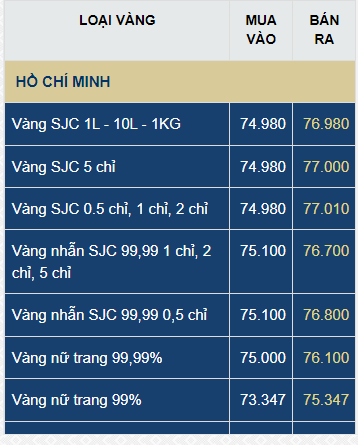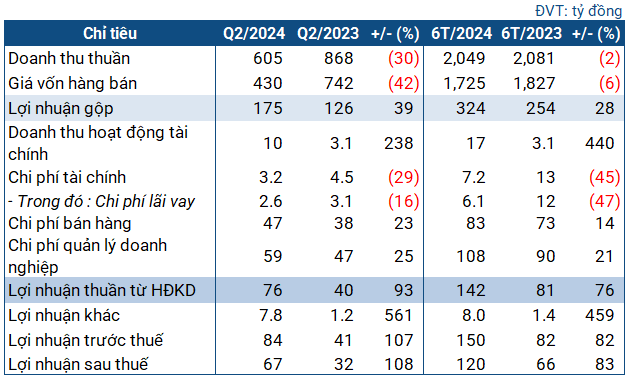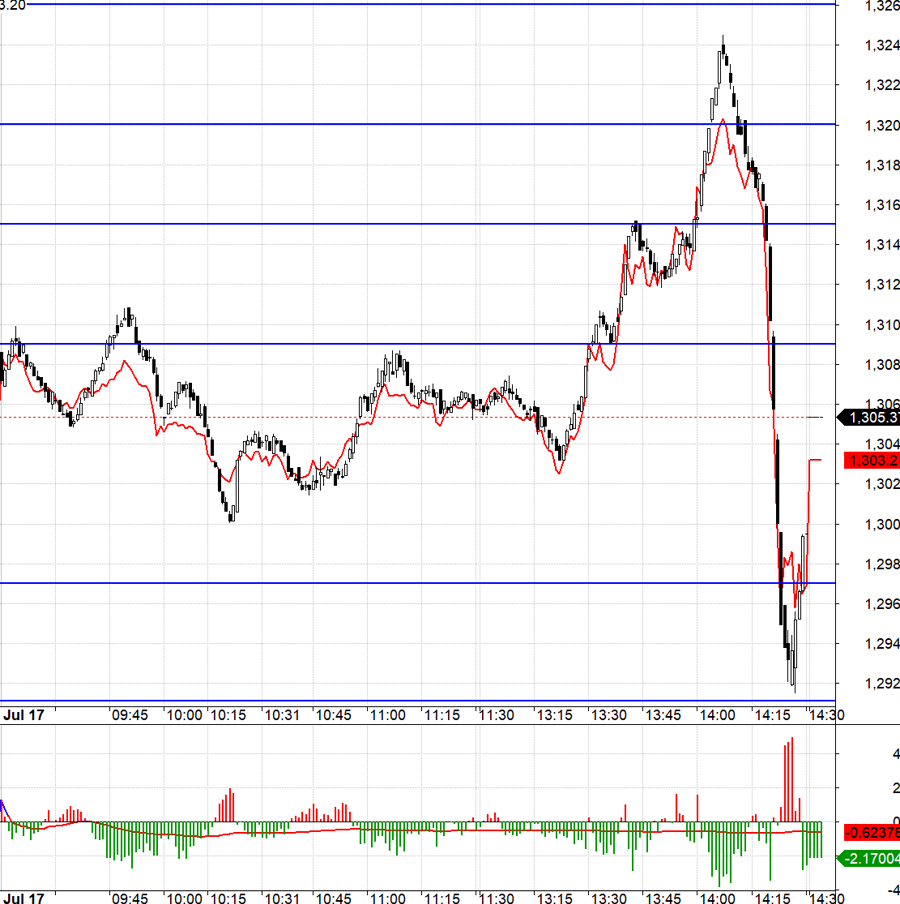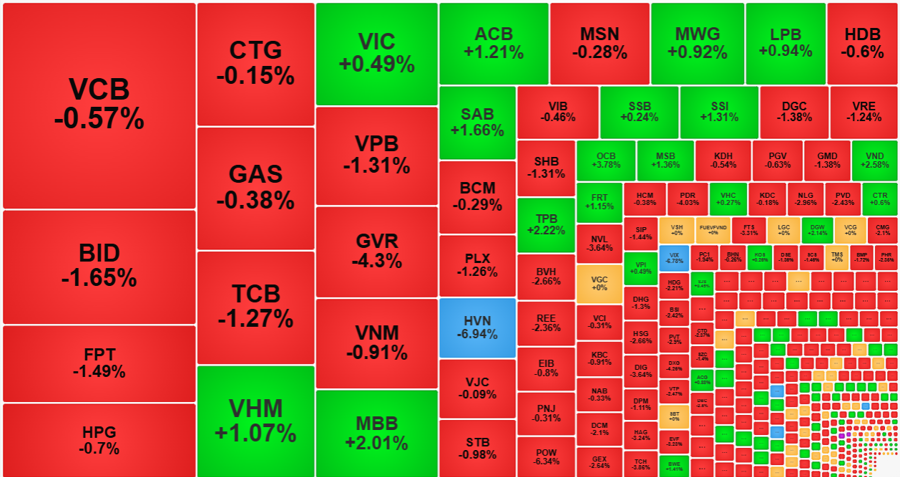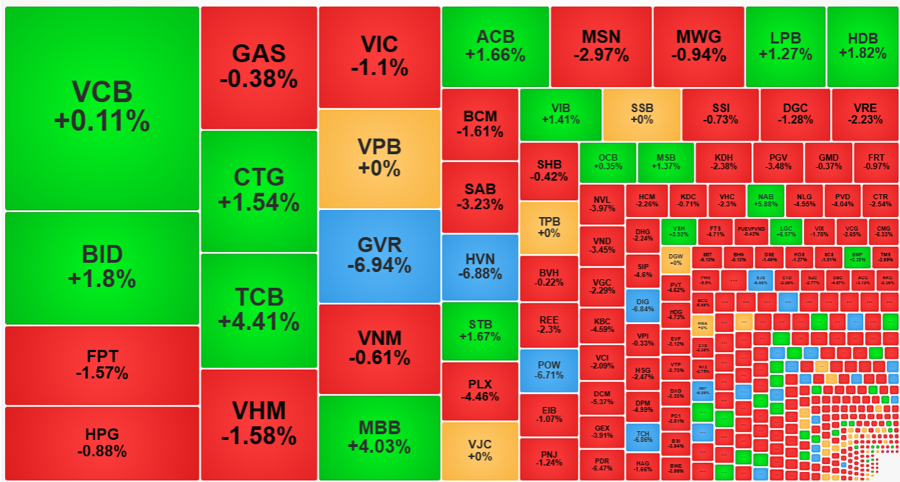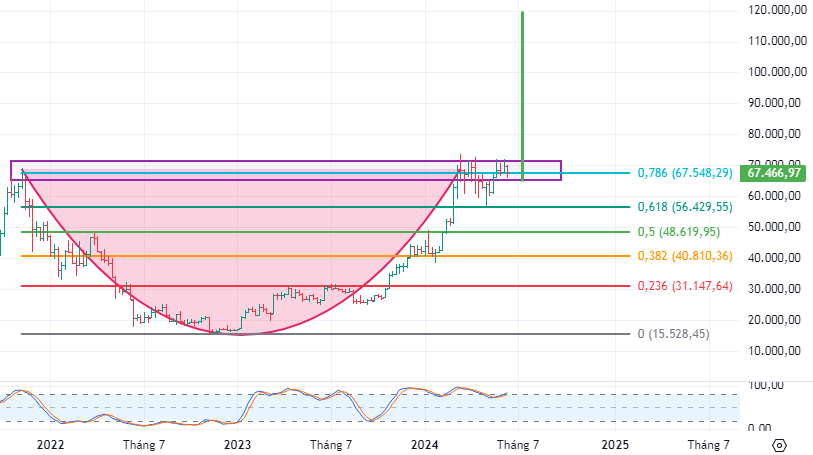Implementing Party’s Resolutions, Government’s Directives, Ministry of Agriculture and Rural Development’s guidance, localities all have resolutions, programs, and plans for agricultural restructuring. For fruit trees, the area, productivity, and quality have been continuously increasing and bringing high economic efficiency. Currently, the entire region has over 377,700 hectares of fruit gardens, accounting for nearly 34% of the whole country.
In Tien Giang province, the province’s direction is to develop fruit trees into a strategic sector towards exports, increasing additional value and helping to innovate agriculture-rural areas-farmers. Among them, priority is given to developing fruit tree groups with competitive advantages and high consumer demand, which have affirmed their brands in the domestic and international markets.

Dragon fruit garden in Cho Gao district, Tien Giang province helps farmers change their lives
Until now, Tien Giang province has over 84,000 hectares of fruit gardens, leading the country with 11 main fruit types. Last year, the province achieved a fruit output of over 1.7 million tons, an increase of nearly 7% compared to the previous year. Leading in the orchard economy are 3 types of fruits with high values when the export market is in high demand: a durian garden generates an income of nearly 2 billion VND/hectare, a jackfruit garden generates more than 500 million VND/hectare, and a dragon fruit garden generates over 400 million VND/hectare. It is gratifying that during this process, many party members have set a good example.
Mr. Le Van Thuy, a farmer party member in My Tinh An commune, Cho Gao district, who grows 3 hectares of Viet GAP dragon fruit gardens with an annual income of over 1 billion VND, shared: “In order for dragon fruit trees to be sustainable, farmers need to participate in production cooperation and product consumption. We need to consider product quality, food safety to ensure the health of consumers… so that our products meet the standards and are of high quality for export.”

Durian is the “billionaire” tree in the Mekong Delta region
In the past 3 years, the specialized jackfruit farming model in Cai Lay district, Cai Lay town, and Cai Be district has developed strongly, surpassing the set resolutions and plans of each locality with more than 22,000 hectares.
“2023, durian fruit production has increased compared to the set resolution. The resolution assigned 37,000 tons, but we achieved 42,000 tons, with an area of 1,400 hectares, generating an income of 2 billion VND/hectare. First, we organized seminars, transferring scientific and technical knowledge to farmers on how to grow durian trees according to Viet GAP and Global GAP standards, instructing the use of organic fertilizers to increase efficiency for durian gardens,” said Mr. Nguyen Van Sang, Deputy Secretary of the party committee, Chairman of the commune’s People’s Committee.
Cai Be is the district with the earliest and strongest developed orchard economy in Tien Giang province, with over 22,000 hectares producing over half a million tons of fruits each year. Mr. Phan Thanh Son, Vice Chairman of the Cai Be District People’s Committee, said that fruit tree production plans are consistently met and exceed the targets set out in the district party committee’s resolutions, and fruit tree farmers have a decent standard of living.
“The district produces a variety of fruit trees, and people’s lives are very good. In general, this year both rice and fruit trees have good prices. At this time, the average income per capita of Cai Be district is nearly 70 million VND per year. With these results, the lives of farmers have developed well. In the near future, we focus on transferring scientific and technical knowledge to improve people’s care methods so that the same area that people currently have will have higher yields and higher productivity,” said Mr. Phan Thanh Son.
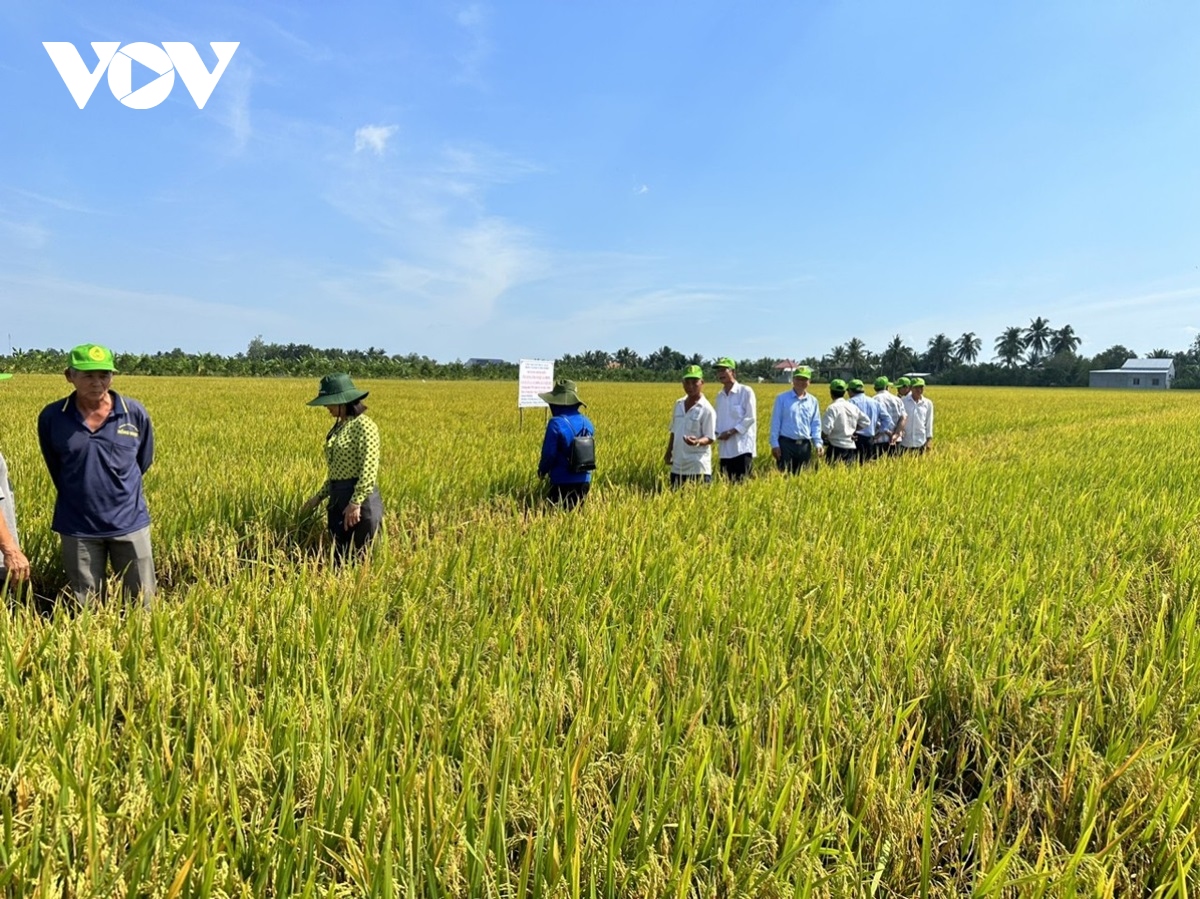
High-quality rice production is being replicated by farmers in the Mekong Delta region
Implementing the Party’s Resolution, so far, Tien Giang has formed concentrated specialized production areas. Last year, the GRDP growth rate of the agricultural, forestry, and fishery sector in the province increased by 4.14%, while the planned growth rate was only 3.5-3.8%. Specifically, the agricultural sector increased by 5.44%, higher than in 2022 (1.72%), contributing greatly to this growth.
Together with the orchard economy, commodity rice production is a strength in the Mekong Delta region. The region currently has over 1.6 million hectares of rice production land, with 2-3 crops per year, accounting for about 50% of the rice output and 95% of the rice exports. With the attention and support of the Party’s and State’s guidelines and policies, the direct guidance of the Government, Central Ministries, and Departments, rice farming is improving in terms of quality and market orientation, heading towards the world market.
Taking the lead in high-quality rice production is Soc Trang province. The party committee’s resolution in the province sets the proportion of specialty rice and high-quality rice at over 93%, of which ST24 and ST25 rice varieties have gained a brand reputation worldwide. Up to now, this resolution has been enthusiastically supported by the local people and has been implemented beyond the targets.
Mr. Lam Sung, a local farmer who has been involved in growing ST high-quality rice for nearly 20 years in Vien Binh commune, Tran De district, Soc Trang province, now has nearly 90% of the area dedicated to ST rice crops. Thanks to cultivating this fragrant specialty rice, the local people have money to build solid and beautiful houses and take care of their children’s education wherever possible.
“In the past, I didn’t grow ST rice, but regular rice, the price was unstable, sometimes very low. Since growing ST rice, the productivity has been high, and the price has also been high. When the market has good prices, it can be sold for up to 2,000 VND/kg more than regular rice. Therefore, since growing ST rice, my profits have increased. This rice has a fragrant smell when it ripens. Since switching to growing ST rice, our people have also developed. The farmers are relatively prosperous thanks to growing ST rice,” said Mr. Lam Sung excitedly.
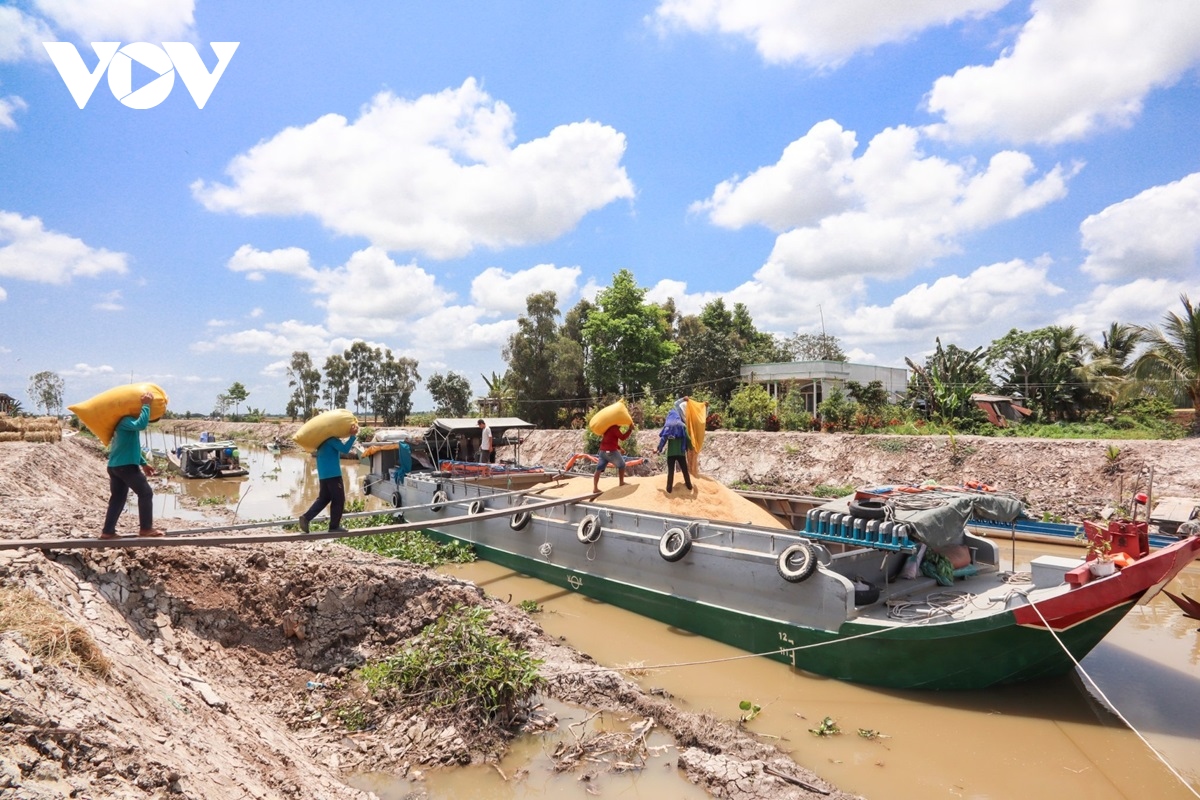
Traders buying rice from farmers
Soc Trang province has an area of over 330,000 hectares of rice cultivation, with an annual output of over 2 million tons. Since 2012, the province has implemented the plan to develop specialized and high-quality rice production areas, gradually increasing the area from over 66,000 hectares to over 178,000 hectares.
“Soc Trang has advantages in rice production and ranks 2nd in the region in terms of agricultural strength, second only to shrimp farming in terms of profitability. With an annual land area of approximately 146,000 hectares, restructuring the agricultural sector to improve low-quality rice production to achieve high yield, quality rice, specialty rice, fragrant rice with export value, and an income for farmers is extremely important. This is highly regarded by the Provincial Party Committee and the Provincial People’s Committee,” emphasized Mr. Vuong Quoc Nam, Deputy Chairman of the Soc Trang Provincial People’s Committee.
It can be said that under the light, strategic guidelines of the provincial Party Committee and the provincial government, and the agricultural sector, in 2023, Soc Trang will produce over 2 million tons of rice, with over 93% of specialty and high-quality rice, surpassing the 2023 resolution of the provincial party committee.
The country is entering another new spring. Localities in the Mekong Delta are continuing to successfully implement the Party’s and Government’s resolutions in their lives, especially in the field of agricultural and rural economic development, towards improving quality, sustainability, eco-friendliness, and high competitiveness for export, increasing incomes, and bringing the Nine Dragons land to new heights.









